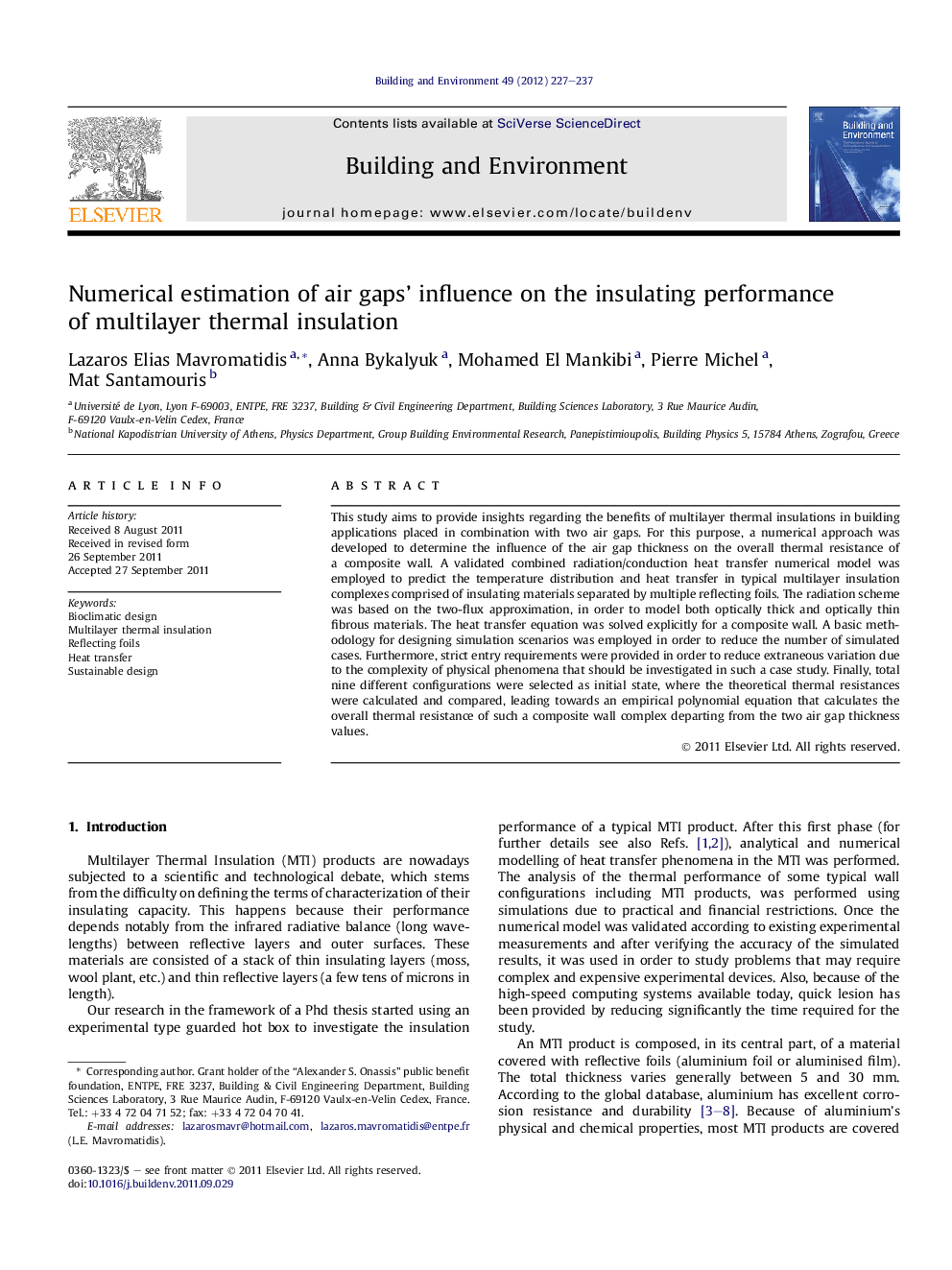| کد مقاله | کد نشریه | سال انتشار | مقاله انگلیسی | نسخه تمام متن |
|---|---|---|---|---|
| 248648 | 502577 | 2012 | 11 صفحه PDF | دانلود رایگان |

This study aims to provide insights regarding the benefits of multilayer thermal insulations in building applications placed in combination with two air gaps. For this purpose, a numerical approach was developed to determine the influence of the air gap thickness on the overall thermal resistance of a composite wall. A validated combined radiation/conduction heat transfer numerical model was employed to predict the temperature distribution and heat transfer in typical multilayer insulation complexes comprised of insulating materials separated by multiple reflecting foils. The radiation scheme was based on the two-flux approximation, in order to model both optically thick and optically thin fibrous materials. The heat transfer equation was solved explicitly for a composite wall. A basic methodology for designing simulation scenarios was employed in order to reduce the number of simulated cases. Furthermore, strict entry requirements were provided in order to reduce extraneous variation due to the complexity of physical phenomena that should be investigated in such a case study. Finally, total nine different configurations were selected as initial state, where the theoretical thermal resistances were calculated and compared, leading towards an empirical polynomial equation that calculates the overall thermal resistance of such a composite wall complex departing from the two air gap thickness values.
► Construction of a typical wall sample including Multilayer Thermal Insulation product.
► Creation and validation of a heat transfer numerical model.
► A basic methodology for designing simulation scenarios was employed.
► Total nine different configurations were selected as initial state.
► A polynomial equation that calculates the overall thermal resistance resulted.
Journal: Building and Environment - Volume 49, March 2012, Pages 227–237